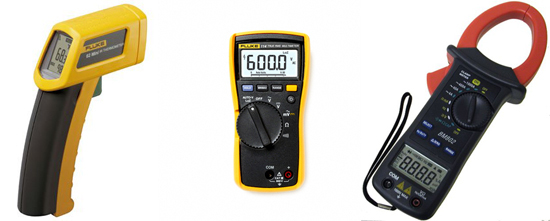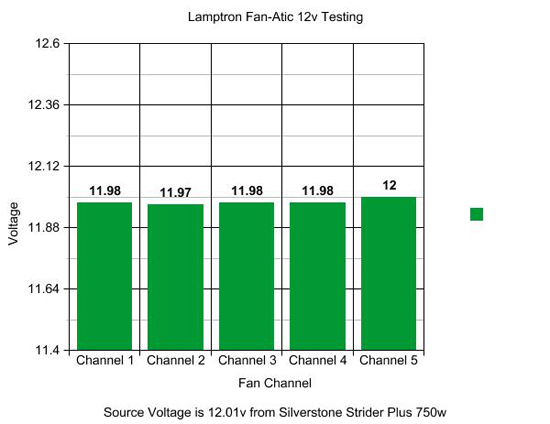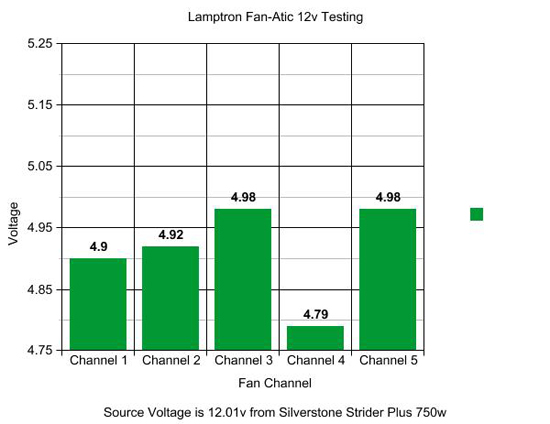Lamptron Fan-Atic 5-Channel Fan Controller Review
Testing Methodology & Results
Testing Methodology
Being a bit of a fan-atic myself, I’ve tested fans in the past and I easily have a small
collection of them. Though for this review I ran into a bit of a
problem; how am I going to load up every channel to 60w? Well, I just so
happen to have a box of Yate Loon fans (64 to be exact) that are all
from servers that I used.
Testing Equipment:
- 7 Yate Loon D14SM-12s per channel
- Fluke 62 Mini Digital Infrared Thermometer
- Fluke 114 True RMS Digital Multimeter
- Sinometer MS2138R AC/DC Clamp Meter
Testing Parameters
- Output at least 58.8w per channel
- Keep 12v output voltage a close to the nominal value supplied by the PSU used.
- Compatibility with a variety of fans tested
- Compatibility with cases
- Ease of use for included functions

There
are the tools I will be using for the job. The Fluke 114 &
Sinometer MS2138R are going to be used in tangent to get my power
measurements. Volts x Amps = Watts, and since this controller has each
channel rated by watts I need to take actual voltage measurements and
amperage measurements to get an accurate result of how much stress I am
adding onto the controller’s channel. This controller also advertises
low heat output; because of the design, the MOSFETs on the back of the
controller should be the part producing the most heat as that is where
the fans are drawing their current from. I will use the Fluke 62 to
measure the temperature in Degrees Celsius (#C) to gauge on a rise
above ambient how warm these MOSFETs are getting.
To gather my measurements I will be using Seven Yate Loon D14SM-12
fans per channel over a 24 hour period to see if this controller can
sustain its rated output in a continuous operating environment. The
ambient testing temperature is 35*C and is artificially kept at that
temperature. My Silverstone Strider Plus 750w will be providing voltage
and amperage to the controller. All voltage and amperage measurements
will be taken periodically, every 6 hours, and averaged together. The
Yate Loons will provide a current draw of 0.7 Amps each, for a total of 8.4 Amps (58.8w if the 12v rail holds steady at 12v). This controller is
rated for 60w (which divided by 12 is 5 Amps), so it will be pushed
to its limits as closely as possible by me.
Now let’s move on to the actual testing.

Here we start off with the 12v testing and with a slight droop in the line; things are pretty rock steady and well within defined ATX parameters of what a 12v output should be (+/-5% of 12v).

Here we have the 5v testing and channel 4 is really worrying me; it’s entering the bottom range of the ATX Specification for 5v output (+/-5% of 5v). This may have been a fluke in my unit, and it may still be in spec, a word of caution is that some fans and pumps may not turn on with the input voltage being this low. If you do buy this product it is something to consider.
With that said, let’s wrap up this review.

Comments are closed.